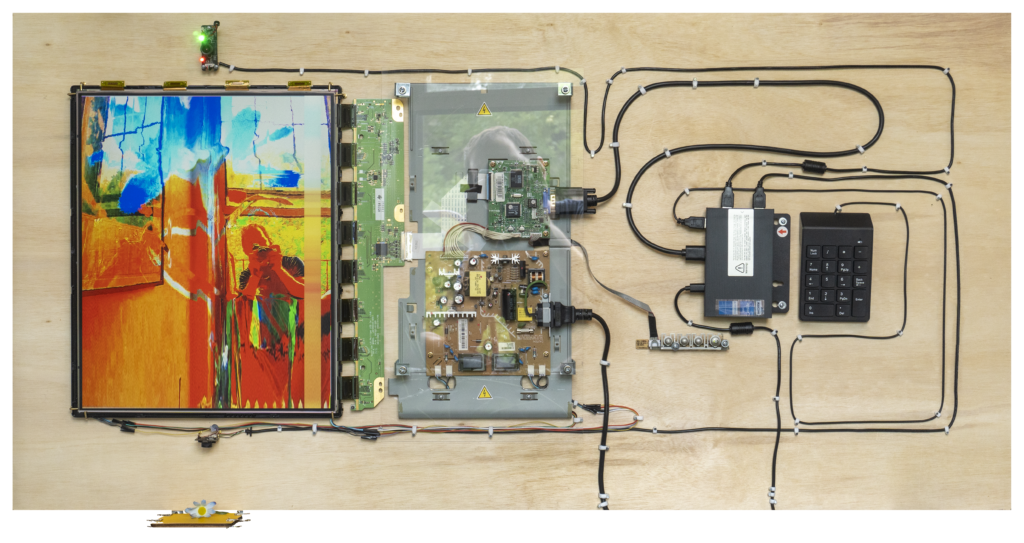Eyes in Collision

The technological ability to save a reality is equivalent to human memory. Thus photography is commonly used to capture a valuable experience before our eyes. In our era, though, where photography is used in great amounts of repetition and where its generation process is happening within milliseconds has shifted its use and, at the same time, its value. Through social media and our constant need to communicate our image, we are now taking pictures not for saving value but as a request of value towards ourselves. To achieve an easy-to-produce valuable reality, we have created filters that either enhance or redefine our representation.
In the colliding eyes, we see photography manifested as a plastic flower. A technologically generated object that caries a valuable memory to the beholder.
On the other camera, we see ourselves. Those two real-time images collide upon the vision of their physical form, distorting the digital body of each other. The two generated photographs that refresh at the speed of micro milliseconds are now beyond photography and video. Their refresh rate has positioned them in the realms of reality. We can now see the eyes of the camera looking back at us, questioning the identity of our digital representation.
